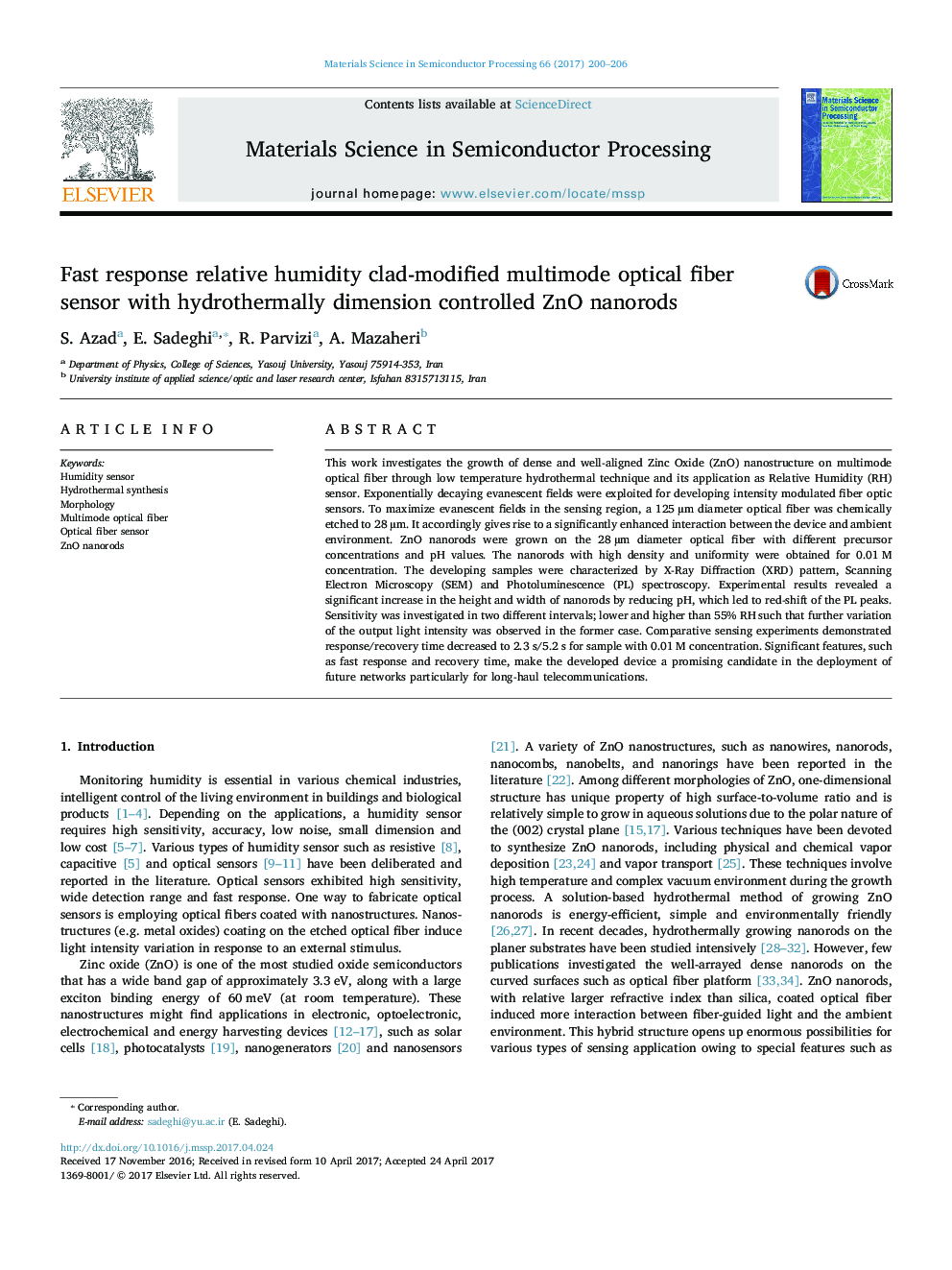| Article ID | Journal | Published Year | Pages | File Type |
|---|---|---|---|---|
| 5005977 | Materials Science in Semiconductor Processing | 2017 | 7 Pages |
Abstract
This work investigates the growth of dense and well-aligned Zinc Oxide (ZnO) nanostructure on multimode optical fiber through low temperature hydrothermal technique and its application as Relative Humidity (RH) sensor. Exponentially decaying evanescent fields were exploited for developing intensity modulated fiber optic sensors. To maximize evanescent fields in the sensing region, a 125 µm diameter optical fiber was chemically etched to 28 µm. It accordingly gives rise to a significantly enhanced interaction between the device and ambient environment. ZnO nanorods were grown on the 28 µm diameter optical fiber with different precursor concentrations and pH values. The nanorods with high density and uniformity were obtained for 0.01 M concentration. The developing samples were characterized by X-Ray Diffraction (XRD) pattern, Scanning Electron Microscopy (SEM) and Photoluminescence (PL) spectroscopy. Experimental results revealed a significant increase in the height and width of nanorods by reducing pH, which led to red-shift of the PL peaks. Sensitivity was investigated in two different intervals; lower and higher than 55% RH such that further variation of the output light intensity was observed in the former case. Comparative sensing experiments demonstrated response/recovery time decreased to 2.3 s/5.2 s for sample with 0.01 M concentration. Significant features, such as fast response and recovery time, make the developed device a promising candidate in the deployment of future networks particularly for long-haul telecommunications.
Keywords
Related Topics
Physical Sciences and Engineering
Engineering
Electrical and Electronic Engineering
Authors
S. Azad, E. Sadeghi, R. Parvizi, A. Mazaheri,
